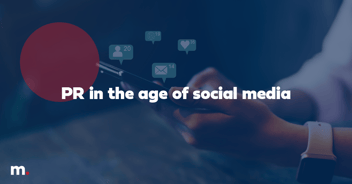Digital vs traditional PR: Which one comes out on top?

A traditional PR strategy used to involve going to events, meet-ups, a showcase, dinner parties —basically anywhere you could get on the list. This facilitated networking with journalists, where you could mention the latest brand or exclusive and have the story soon featured in their publication or broadcast.
The industry has changed over time and PR is constantly evolving.
Even the traditional publicists who once worked specifically for magazines, radio and television are now including digital PR into their daily press routines. Digital can provide opportunities for a much more targeted viewership, and build an online brand reputation faster with the right audience in mind.
What is traditional PR?
Traditional PR mostly refers to media that is directly engaged, rarely reshared, and mostly presented in a newspaper, radio or broadcast TV format. Even though it is considered old school, there is no doubt that traditional PR can still be highly effective. The issue that arises with traditional PR is when you try to measure the success. You’re not going to know how long someone was reading the newspaper or sitting in front of their TV. You have to guess, using predictions and averages.
Despite this challenge, the brand coverage traditional PR provides is still enough to warrant the use of this old school but highly effective PR strategy.
What is digital PR?
Digital PR, by comparison, encompasses digital online marketing strategies to boost real-world data and enhance a brand’s presence and visibility. Digital PR combines all aspects of your PR strategy and aligns it with SEO, lead generation and inbound marketing.
When pitching for digital PR your message and brand push is much more subtle and has to be extremely creative. The market is flooded so your digital PR strategy has to utilise new tools and quality content to stand out. Whether that be by using influencers, featuring a trend or live streaming, it is important to make sure it’s something your audience cares about.
With digital PR measuring outcomes becomes much easier, you don’t have to predict or average out anything because you can track in real-time how your strategy is progressing and make adjustments along the way. When it comes to providing digital PR content, keeping your eyes peeled for the story or trend will give your content the reach. An example is the Balenciaga X Crocs heeled rubber shoe, which generated significant earned media in 2020 by taking advantage of the comfortable fashion trend and people’s love of sharing their opinions about Crocs online.
The future?
Although it is difficult to predict PR trends, it’s safe to say that digital PR will continue to evolve, especially with the introduction of AI and other tools to help build and target PR strategies.
As digital PR becomes more widespread, PR professionals are going to have to become more creative and clever when it comes to the content they produce. Remember your digital PR strategy allows for you to engage and interact with your audience, so utilise this. Both digital and traditional PR strategies have their limitations, but utilising both will ensure your earned media opportunities are optimised.





